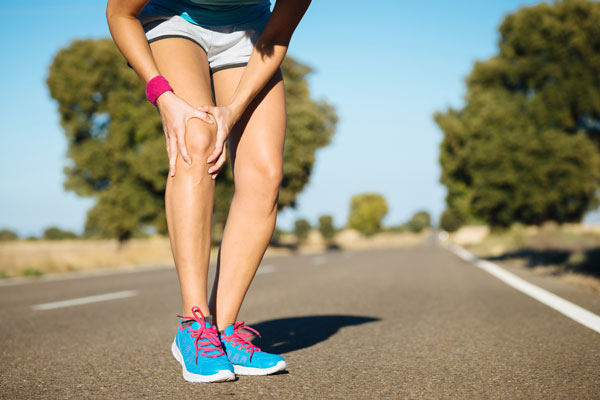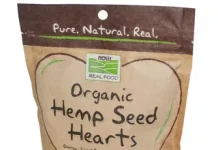Do you suffer from aches and pains? If so, then you’re not alone. More than 100 million Americans report feeling some degree of physical discomfort every day. Some of the most common causes for this problem include arthritis, emotional stress and, sometimes, lifestyle choices.
Prescription medications do a great job of helping many pain sufferers find relief. But these products have several drawbacks, including the danger of addiction. So, if you’re looking for a better way to relieve your aches and pains, we have eight natural tips for you to try. Use this information alongside the advice of your healthcare provider to live a happier, more pain-free life.
Table of Contents
Tip Number One: Try a Homemade Heat Pack
Applying heat to an aching joint or muscle is one of the oldest treatments for chronic pain on earth. But there’s no need to spend money on a store-bought heating pack. In fact, all you need is three basic items that you probably have around the house:
- A clean sock.
- 2-3 cups of uncooked rice or beans.
- A microwave.
Fill the sock with the beans or rice, tie a knot in the open end of the sock, and stick it in the microwave for about a minute. Use care when taking it out, as it may be quite hot.
You might have to experiment with your microwave settings a few times to get your heat pack to the right temperature. But, once you’ve found the sweet spot, it should provide warming relief for an hour or more.
Tip Number Two: Try Low-Impact Exercises
Exercising with sore joints is a catch 22. You know that physical activity may strengthen the aching area, but those same activities could actually make the pain worse.
One possible way to get around this dilemma is by trying low-impact exercises like swimming, water aerobics, cycling, or walking on a cushioned treadmill. You may find that these activities give you welcome relief from discomfort.
Tip Number Three: Stretch
Stretching is one of the best exercises on earth, but even devoted fitness buffs sometimes skip a warming stretch before their workout. This is never a good idea, because muscles and joints are more prone to injury if they’re not limbered up.
Your doctor or physical therapist may be able to recommend stretching exercises that are appropriate for your health profile and level of physical activity.
You may also find that yoga or tai chi provide the benefits you’re after. Remember to take it slow and follow your instructor’s recommendations for best results.
Tip Number Four: Get a Massage
Therapeutic massage provides enormous benefits to the human body. It stimulates circulation, reduces inflammation, and enhances flexibility. Look for a masseuse that’s thoroughly trained and properly certified. If you have health care coverage, then it may cover part of the costs for treatment.
Tip Number Five: Try Mindfulness Meditation
Meditation is typically associated with Eastern mysticism, but its benefits have become well known to Western science in recent years. Mindfulness meditation is especially beneficial, because it’s easy to learn and has a pronounced calming effect on both mind and body.
As with other forms of therapy mentioned in this post, it’s important to start slow and follow the guidance of an experienced trainer. You may want to meditate for a few minutes at first, then gradually increase the length of your sessions over time.
Tip Number Six: Change Your Sleep Surface or Position
For many of us, getting out of bed in the morning is the most painful time of day. Some people find that a new mattress is the only way to find lasting relief. Others, however, benefit from simply changing their sleep position or using a pillow between their knees.
Changing your sleep environment is another way to get better rest. You may want to make the room dark or cooler, avoid using electronics right before bedtime, or end your day by reading a few pages of a relaxing book.
Tip Number Seven: Try Supplements
Nutritional supplements are a topic of constant debate in the medical community. There is no doubt that some of them have been overhyped. On the other hand, a few of these products are backed by scientific research. Examples include:
- Turmeric/curcumin: preliminary studies suggest that these two traditional Indian spices may have potent anti-inflammatory and pain-fighting properties.
- Natural multivitamins: which provide excellent support for overall health. Be sure to choose a quality brand that derives its vitamin content from actual food sources, not laboratory chemicals.
- CBD oil: a derivative of the hemp plant, cannabinoids (CBD) have recently been the subject of much scientific study. A growing body of evidence indicates that it may help to reduce inflammation and improve mental well-being.
Some nutritional supplements might have unwanted side effects, so consult with your healthcare professional before trying them.
Tip Number Eight: Try Trolamine Salicylate Cream
Trolamine Salicylate is a medically recognized compound that has potent anti-inflammatory properties. The online company Hempvana sells a cream-based pain relief product that contains the highest levels of trolamine salicylate allowed by law. We highly recommend checking out Hempvana pain relief cream reviews to see if this might be the solution you’re looking for.
Summing It All up
Managing everyday aches and pains doesn’t have to involve surgery or prescription medications. Try the tips described in this post and see how they work for you. It may not be long before you find yourself feeling better than you have in years.





